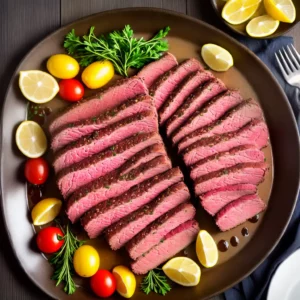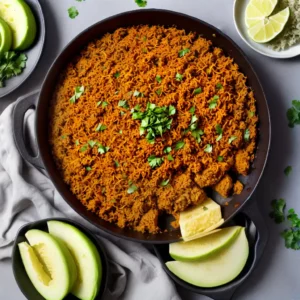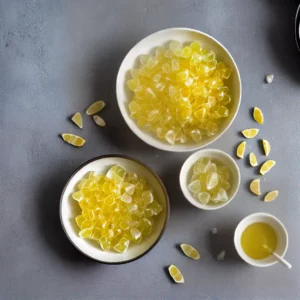Hello, fellow citrus enthusiasts! Today, I’m going to share with you my tried and true techniques for cutting an orange like a pro. Whether you’re looking to make wedges, segments, or wheels, I’ve got you covered. Not only will these techniques yield perfect slices every time, but they will also elevate the presentation of your dishes, making them even more appetizing and visually appealing. So, let’s dive in and learn the art of cutting an orange!
Key Takeaways:
- Learning how to cut an orange properly enhances both the taste and presentation of your dishes.
- There are various cutting techniques for different types of orange slices, including wedges, segments, and wheels.
- Before cutting, it’s important to select and wash the oranges to ensure cleanliness and freshness.
- By mastering these techniques, you can achieve beautiful and consistent orange slices for salads, desserts, and more.
- Remember to store cut oranges properly and use them within a few days for optimal freshness.
Why Proper Orange Cutting Techniques Matter
Using proper orange cutting techniques is essential for enhancing the presentation of your dishes and ensuring consistent and beautiful slices. Whether you’re preparing a refreshing breakfast, a vibrant salad, or a delightful dessert, mastering these techniques will elevate your culinary skills. Let’s explore why paying attention to the way you cut oranges can make a difference in your cooking.
Enhanced Presentation
Proper cutting techniques result in visually appealing orange slices that can instantly elevate the presentation of your dishes. Whether you’re serving orange wedges, segments, or wheels, precise and consistent cuts create a professional and polished look. The visual impact of well-cut oranges can impress your guests and make your meals even more appetizing.
Improved Texture and Eating Experience
The way an orange is cut can affect its texture and the overall eating experience. By following the right techniques, you can remove any bitter white pith or tough membrane, ensuring that each bite is juicy and delicious. Whether you prefer the refreshing burst of flavor from orange segments or the delicate texture of orange wheels, proper cutting techniques allow you to enjoy the true essence of the fruit.
Efficiency in Meal Preparation
Mastering proper orange cutting techniques not only enhances the presentation and taste of your meals but also improves your efficiency in the kitchen. When you can quickly and accurately prepare orange slices, you save time and effort, especially when you need to serve a large number of guests or prepare multiple dishes. With practice, you’ll become more confident and efficient in cutting oranges, making your cooking experience more enjoyable.
By understanding the importance of proper orange cutting techniques, you can take your culinary skills to the next level. The enhanced presentation, improved texture, and increased efficiency in meal preparation are just a few reasons why investing time in mastering these techniques is worthwhile. So, let’s dive into the various cutting methods and explore the step-by-step process of cutting an orange in the next sections of this article.
Selecting and Washing Oranges
When it comes to selecting the perfect oranges, there are a few things to keep in mind. Look for oranges that feel heavy for their size, indicating juiciness. The skin should be firm and smooth, without any soft spots or cuts. A healthy, finely textured skin is a good sign of freshness. Remember to use all your senses – the aroma should be sweet and citrusy, while the color should be bright and vibrant.
Prior to cutting the oranges, it’s important to wash them thoroughly to remove any dirt or residue. Rinse the oranges under cool running water, gently scrubbing if needed. This will help ensure that the fruit is clean and safe to consume. Once washed, dry the oranges with a clean towel to prevent any contamination during the cutting process.
Table: Tips for Selecting Oranges
| Criteria | Considerations |
|---|---|
| Weight | Choose oranges that feel heavy for their size |
| Skin | Look for firm skin with no soft spots or cuts |
| Texture | Opt for oranges with a healthy, finely textured skin |
| Color | Choose oranges that are bright and vibrant |
| Aroma | Make sure the oranges have a sweet and citrusy aroma |
By following these simple guidelines for selecting and washing oranges, you can ensure that you’re working with the best-quality fruit. This will ultimately enhance the taste and enjoyment of your culinary creations.
Method A) Removing the Peel – Hand Peeled Segments
To hand peel an orange into segments, score the top and sides of the orange with a sharp paring knife, then pull off the sides to reveal the whole orange inside. Use your fingers to separate the orange into halves, then into individual segments. This method is quick and ideal for quick snacks.
Elevate Your Snacking Game
When it comes to enjoying a fresh orange, there’s something satisfying about peeling it yourself. Hand peeled segments offer a burst of juiciness and the delight of breaking the orange down into bite-sized pieces. To begin, score the top and sides of the orange with a sharp paring knife, taking care not to cut too deep into the flesh. Once scored, gently pull off the sides to reveal the whole orange inside.
Now, using your fingers, separate the orange into halves, working your way around the fruit. Feel the natural divisions between the segments and gently pry them apart. With each separation, you’ll unlock the vibrant, juicy segments that make oranges so irresistible. This method is ideal for quick snacks, whether you’re on the go or simply craving a refreshing treat.
Hand peeled segments offer a burst of juiciness and the delight of breaking the orange down into bite-sized pieces.
| Advantages | Disadvantages |
|---|---|
| Quick and easy method | Can be messy if not done carefully |
| Ideal for quick snacks | Not suitable for fancy presentations |
| No additional tools required | May not yield perfectly even segments |
In Summary
Hand peeling oranges into segments is a simple and satisfying way to enjoy this juicy fruit. With just a paring knife and your fingers, you can quickly transform an orange into bite-sized pieces perfect for snacking. While this method may not result in perfectly uniform segments, its convenience and speed make it a popular choice for those looking for a quick burst of citrus flavor.
Method A) Removing the Peel – Peel with a Knife
When it comes to removing the peel from an orange, using a knife can provide clean and precise results. This method is ideal for creating segments or wheels that can be used in various culinary preparations. Here’s how you can easily peel an orange with a knife:
- Start by using a sharp chef’s knife to slice off the top and bottom of the orange.
- Next, make vertical cuts down the sides of the orange, scoring the skin without piercing the flesh.
- Gently peel off the skin, working your way around the orange until the sweet and juicy flesh is revealed.
By using a knife to remove the peel, you can achieve consistent and presentable orange slices. This technique is especially useful when you want to create segments or wheels that can be easily incorporated into salads, desserts, or other dishes.
“Using a knife to peel the orange allows for clean, precise cuts and ensures that the flesh remains intact. It’s a great method for achieving visually appealing slices that can elevate the presentation of your culinary creations.” – Chef John
Remember to exercise caution when handling sharp knives and always work on a stable cutting surface. With practice, you’ll become more confident in your knife skills and be able to effortlessly peel oranges with precision.
| Benefits of Using a Knife to Remove Orange Peel | Benefits of Using a Knife to Remove Orange Peel |
|---|---|
| Allows for clean and precise cuts | Preserves the integrity of the flesh |
| Enhances the presentation of dishes | Provides consistent slices |
| Can be used to create segments or wheels | Offers versatility in culinary preparations |
Now that you know how to remove the peel from an orange using a knife, you can confidently incorporate this technique into your cooking repertoire. Enjoy the process of transforming an ordinary orange into beautifully sliced segments or wheels that will impress both your eyes and taste buds!
Method A) Cutting into Segments
When it comes to cutting an orange into segments, there is a technique known as “supreming” that is often used in culinary schools for fancy presentations in salads and desserts. Supreming involves removing the individual segments from the orange, leaving behind the bitter white membrane. Here’s how I do it:
- Start by peeling the orange and removing the skin completely. Make sure to remove as much of the white pith as possible, as it can be bitter in taste.
- Next, take a sharp paring knife and insert it at a slight angle between the membrane and one of the segments. Slowly glide the knife along the membrane, freeing the segment from the orange.
- Continue this process for each segment, working your way around the orange. Make sure to remove any remaining pith or membrane that may be attached to the segments.
Once you’ve supremed the orange, you’ll be left with beautiful, individual segments that can be used in a variety of dishes. They add a touch of elegance and make for a visually appealing presentation. Try using them in salads, desserts, or even as a garnish for cocktails.
“Supreming an orange allows you to highlight the natural sweetness and texture of the fruit. Removing the membrane creates a clean and refined look that elevates any dish.” – Chef Jane
So the next time you have an orange on hand, consider using the supreming technique to create perfectly segmented slices. The process may take a bit of practice, but the results are well worth it. Enjoy the juicy sweetness and vibrant colors of your freshly cut orange segments!
Table: Varieties of Oranges for Segmenting
| Variety | Characteristics |
|---|---|
| Naval | Seedless, easy to peel, sweet and juicy |
| Blood Orange | Deep red flesh, rich berry-like flavor |
| Cara Cara | Pink flesh, sweet and tangy taste |
When choosing oranges for segmenting, look for varieties that are seedless and easy to peel. Naval oranges are a popular choice due to their sweet and juicy nature. Blood oranges and Cara Caras are also great options for their unique flavors and vibrant colors.
Method A) Cutting into Wheels
When it comes to creating beautiful and versatile orange slices, cutting them into wheels is a fantastic option. Whether you want to use them as decorative elements on cakes or add them to a refreshing fruit salad, the circular shape of orange wheels adds visual appeal to any dish.
To cut the orange into wheels, start by peeling it using the method mentioned earlier. Once the orange is peeled, place it on a cutting board and hold it firmly with one hand. Take a sharp chef’s knife and make horizontal cuts, about ¼-inch thick, across the width of the orange. As you cut, you will see the beautiful circular orange wheels emerge.
These orange wheels can be used in a variety of ways, from garnishing desserts to adding a burst of citrus flavor to savory dishes. Let your creativity flow and enjoy the vibrant and refreshing taste of these perfectly cut orange wheels.
Tips for Using Orange Wheels:
- Add orange wheels to a pitcher of water for a refreshing citrus-infused drink.
- Use orange wheels as a garnish for cocktails or mocktails.
- Arrange orange wheels on a platter with other fruits for an eye-catching fruit display.
- Place an orange wheel on top of a cupcake or muffin for a decorative touch.
“The circular shape of orange wheels adds visual appeal to any dish.”
Method B) Keeping the Peel On – Making Wedges
When it comes to cutting oranges, leaving the peel on and making wedges is an easy and convenient method. Not only does it save time, but it also adds a playful and vibrant touch to your dish. Here’s how you can create delicious orange wedges:
Step 1: Prepare the Orange
Start by selecting a ripe orange with a firm skin. Thoroughly rinse the orange under cool running water, scrubbing if necessary to remove any dirt. Once cleaned, pat dry with a clean towel.
Step 2: Cut the Orange in Half
Using a sharp knife, carefully cut the orange in half crosswise. This will give you two equal halves with the orange peel intact.
Step 3: Slice into Wedges
Take one half of the orange and place it cut-side down on a cutting board. Holding the orange firmly, cut it into smaller wedges by making vertical cuts from the center to the edge. Repeat this process with the other half of the orange.
Now you have a plate of vibrant orange wedges ready to be enjoyed! This method is perfect for quick and easy treats, whether you’re looking for a halftime snack or a refreshing addition to your fruit platter.
Selecting and Storing Oranges
When it comes to selecting oranges, there are a few key factors to consider. Look for oranges that feel heavy for their size, as this indicates juiciness. The skin should be firm and free from any soft spots or cuts. Additionally, a finely textured skin indicates a healthy, flavorful orange.
Oranges are available year-round, but they are most prominent in the winter months. To ensure optimal freshness, store whole oranges at room temperature for up to a week. If you need to extend their shelf life, refrigerate them for about 2-3 weeks. However, avoid keeping oranges in the refrigerator for too long, as they may dry out and lose flavor.
Properly selecting and storing oranges is essential for enjoying their vibrant flavor and nutritional benefits. Follow these tips to ensure you always have the best oranges on hand for your culinary creations:
- Choose oranges that feel heavy and have firm skin without any soft spots or cuts.
- Store whole oranges at room temperature for up to a week, or in the refrigerator for 2-3 weeks.
- Avoid leaving oranges in the refrigerator for too long, as they may dry out and lose flavor.
By following these simple guidelines, you can enjoy the delightfully refreshing taste of oranges whenever you desire!
Tips for Selecting and Storing Oranges:
| Selection Tips | Storage Tips |
|---|---|
| Choose oranges that feel heavy for their size. | Store whole oranges at room temperature for up to a week. |
| Look for oranges with firm skin and no soft spots or cuts. | Refrigerate oranges for 2-3 weeks for extended freshness. |
| Opt for oranges with a healthy, finely textured skin. | Avoid keeping oranges in the refrigerator for too long to prevent drying out. |
“Choosing the right oranges and storing them properly ensures that you always have the best quality fruit for your recipes. Follow these tips to enjoy flavorful and juicy oranges all year round!”
Tips for Using Oranges
Oranges are a versatile fruit that can be used in a variety of dishes, adding a burst of vibrant flavor. Here are some tips to make the most out of your oranges:
1. Add them to salads:
Oranges can bring a refreshing and tangy element to your salads. Simply peel and separate the segments, and toss them with your favorite greens, nuts, and dressing for a delightful combination of flavors.
2. Use the juice for dressings or sauces:
Squeeze the juice from fresh oranges to create flavorful dressings or sauces. The natural sweetness of the oranges will add a unique twist to your savory dishes, enhancing their taste and complexity.
3. Incorporate them into smoothies and cocktails:
Oranges make a great addition to smoothies and cocktails, providing a burst of citrusy goodness. Blend them with other fruits, yogurt, and ice for a refreshing smoothie, or squeeze their juice for a zesty twist to your favorite cocktails.
4. Enhance flavors with orange zest:
The zest of oranges, which is the colorful outer part of the peel, is bursting with essential oils that carry intense flavor. Grate the zest and use it to add a bright, citrusy note to baked goods, desserts, and savory dishes.
Get creative with your orange usage and enjoy the sweet, tangy taste of this versatile fruit in various culinary creations. Whether you’re looking to add a pop of color, a vibrant flavor, or a refreshing twist, oranges are sure to elevate your dishes to the next level!

Why Cooking Reduces the Orange Flavor
Cooking oranges can have a significant impact on their flavor profile. When oranges are heated, whether in a pan or through other cooking methods, the volatile aroma compounds found in the skin and juice can be lost. These compounds are responsible for the distinct and vibrant citrus fragrance that we associate with oranges.
During the cooking process, the heat causes a portion of these flavor compounds to evaporate, resulting in a reduction of the orange flavor. This is why cooked oranges may not have the same intense and fresh taste as their raw counterparts. However, this doesn’t mean that cooking oranges is entirely detrimental to their flavor.
While the overall flavor may be diminished, the juice of cooked oranges can still provide a solid base flavor for sauces, marinades, dressings, and other culinary creations. Additionally, adding orange zest at the end of the cooking process can help restore and enhance the citrus flavor and aroma, ensuring that the dish still carries the essence of orange.
The Importance of Timing and Techniques
When cooking with oranges, it’s essential to be mindful of the timing and the techniques used. Overcooking can result in not only a loss of flavor but also a change in texture. Oranges that are subjected to prolonged heat can become mushy and lose their vibrant color.
To preserve the best possible flavor when cooking with oranges, it’s recommended to add the juice or zest towards the end of the cooking process. This allows the citrusy notes to shine through without being compromised by excessive heat.
Exploring Culinary Possibilities
While cooking may reduce the orange flavor, it opens up a world of culinary possibilities. Cooked oranges can be used to create delicious sauces, glazes, syrups, and marmalades. They can be added to both sweet and savory dishes, lending a subtle hint of citrus that complements a wide range of ingredients.
Experimenting with different cooking techniques and flavor combinations can lead to exciting and unexpected results. Whether it’s caramelizing orange juice for a tangy glaze or infusing orange zest into a creamy dessert sauce, incorporating cooked oranges into your recipes allows for a unique twist on traditional flavors.
| Cooking Method | Effect on Orange Flavor |
|---|---|
| Raw, uncooked | Intense, fresh, and vibrant |
| Cooking | Reduces overall flavor, but still provides a base citrus taste |
| Adding zest | Enhances and restores citrus flavor and aroma |
How to Cut an Orange: Step-by-Step Tutorial
Whether you’re looking to make perfect wedges, segments, or wheels, cutting an orange can be a simple yet effective way to elevate your culinary skills. In this step-by-step tutorial, I’ll guide you through the process of cutting an orange with precision and finesse. Follow these easy instructions to create beautifully presented orange slices for your next breakfast, salad, entree, or dessert!
Step 1: Rinse and Dry the Orange
Start by rinsing the orange under cool running water to remove any dirt or residue. Use your hands to gently scrub the surface, if needed. Once the orange is clean, pat it dry with a clean towel to ensure a firm grip during the cutting process.
Step 2: Choose Your Method
Decide whether you want to remove the peel or keep it on, depending on your desired outcome. If you prefer hand peeled segments or peel with a knife, follow the instructions in Sections 4 and 5. For making wedges or cutting into wheels while keeping the peel on, refer to Section 8.
Step 3: Cutting Segments or Wheels
If you’re removing the peel, use a paring knife to separate the orange into segments or a chef’s knife to create circular wheels. To ensure clean, precise cuts, hold the knife with a firm grip and slice through the orange with a gentle sawing motion. Be cautious of the white pith and membrane while cutting to maintain the integrity of the slices.
By following these step-by-step instructions, you can confidently cut an orange and create visually appealing slices. Remember to use a sharp knife for clean cuts, rinse and dry the orange beforehand, and select the method that best suits your desired outcome. Now, let’s put these techniques into practice and enjoy the refreshing taste of perfectly cut oranges!
Tips for Storing Cut Oranges
Once you have cut oranges into your desired shape and size, it’s important to store them properly to maintain their freshness and flavor. Follow these simple tips to ensure your cut oranges stay delicious:
- Transfer the cut oranges into an airtight container: Placing your cut oranges in an airtight container helps to prevent them from drying out and absorbing any unwanted odors from the refrigerator.
- Refrigerate the container: Store the container of cut oranges in the refrigerator to keep them cool and slow down the natural process of oxidation.
- Consume within two to three days: Cut oranges are best enjoyed within a couple of days for optimal taste and texture. Avoid keeping them for too long as they may lose their juiciness and become less appetizing.
- Freshness check: Before consuming the cut oranges, always check for any signs of spoilage such as mold, an off smell, or a slimy texture. If any of these signs are present, it is best to discard the oranges.
By following these storage tips, you can enjoy the deliciousness of cut oranges for several days, adding a burst of citrus flavor to your meals and snacks.

Conclusion
In conclusion, mastering the art of cutting an orange is a skill that can greatly enhance your culinary experience. Whether you’re preparing a refreshing breakfast, a vibrant salad, a flavorful entree, or a delicious dessert, using proper cutting techniques will elevate the taste and presentation of your dishes.
By selecting the right oranges and washing them thoroughly, you ensure that you’re working with fresh and clean fruit. Whether you choose to remove the peel or keep it on, there are various methods to achieve perfect slices, including hand peeling, using a knife, or cutting into wedges, segments, or wheels.
Remember to store whole oranges properly, either at room temperature or in the refrigerator, to maintain their freshness. Cut oranges should be consumed within a few days and stored in an airtight container in the refrigerator. Freezing cut oranges is not recommended as it may affect their texture.
So, go ahead and experiment with the different cutting techniques to enjoy the refreshing flavors of oranges in your culinary creations. Whether you’re a professional chef or an enthusiastic home cook, these tips and techniques will surely help you make the most of this versatile citrus fruit!
FAQ
Why is it important to use proper cutting techniques for oranges?
Proper cutting techniques ensure beautiful and consistent slices, enhancing the presentation of your dishes.
How do I select and wash oranges?
Look for oranges that are heavy for their size, have firm skin with no soft spots or cuts, and have a healthy, finely textured skin. Rinse them thoroughly under cool running water, scrubbing if needed to remove any dirt, and dry them with a clean towel.
How do I remove the peel to make hand-peeled segments?
Score the top and sides of the orange with a sharp paring knife, then pull off the sides to reveal the whole orange inside. Use your fingers to separate the orange into halves, then into individual segments.
How can I remove the peel with a knife?
Use a chef’s knife to slice off the top and bottom of the orange, then score the skin down the sides. Peel off the skin to reveal the sweet, juicy flesh inside.
How do I cut an orange into segments?
Once the orange is peeled, use a paring knife to separate and remove each individual segment from the white membrane.
How do I cut an orange into wheels?
Use a chef’s knife to cut the peeled orange into circular slices, known as wheels.
How do I make orange wedges?
For wedges, simply cut the orange in half crosswise, then cut each half into smaller wedges or rounds.
What should I consider when selecting and storing oranges?
Choose oranges that feel heavy for their size and have firm skin without soft spots or cuts. Store whole oranges at room temperature for up to a week, or in the refrigerator for about 2-3 weeks.
How can I use oranges in various dishes?
Oranges can be added to salads, used for dressings or sauces, incorporated into smoothies and cocktails, and their zest can be used to enhance flavors and aromas.
Why does cooking reduce the flavor of oranges?
Cooking oranges can cause the loss of volatile aroma compounds found in the skin and juice, resulting in reduced flavor. However, the juice can still provide a base flavor for sauces, and adding zest at the end of cooking can enhance the citrus flavor and aroma.
How do I cut an orange step-by-step?
Rinse and dry the orange, then choose the desired method – either removing the peel or keeping it on – and follow the step-by-step instructions provided in the article.
How should I store cut oranges?
Store any leftover cut oranges in an airtight container in the refrigerator to maintain freshness, but it is best to consume them within two to three days. Freezing cut oranges is not recommended as their high water content may result in a less desirable texture when thawed.
Source Links
- https://www.thekitchn.com/how-to-cut-an-orange-23490274
- https://www.jessicagavin.com/how-to-cut-an-orange/
- https://feelgoodfoodie.net/recipe/how-to-cut-an-orange/
Related Recipes:
 How to Cut an Orange? (Step-By-Step Guide)
How to Cut an Orange? (Step-By-Step Guide)
 How to Freeze Oranges: Keep Citrus Fresh for Longer
How to Freeze Oranges: Keep Citrus Fresh for Longer
 How to Store Oranges? (Perfect Every Time!)
How to Store Oranges? (Perfect Every Time!)
 How to Cut a Tomato: Techniques for Every Dish
How to Cut a Tomato: Techniques for Every Dish
 How to Cut Dragon Fruit? (Perfect Step-By-Step Guide)
How to Cut Dragon Fruit? (Perfect Step-By-Step Guide)
 How to Cut a Tomato? (Perfect Step-By-Step Guide)
How to Cut a Tomato? (Perfect Step-By-Step Guide)
 How to Cut Green Onions? (Step-By-Step Guide)
How to Cut Green Onions? (Step-By-Step Guide)
 How to Cut an Apple Like a Pro
How to Cut an Apple Like a Pro








